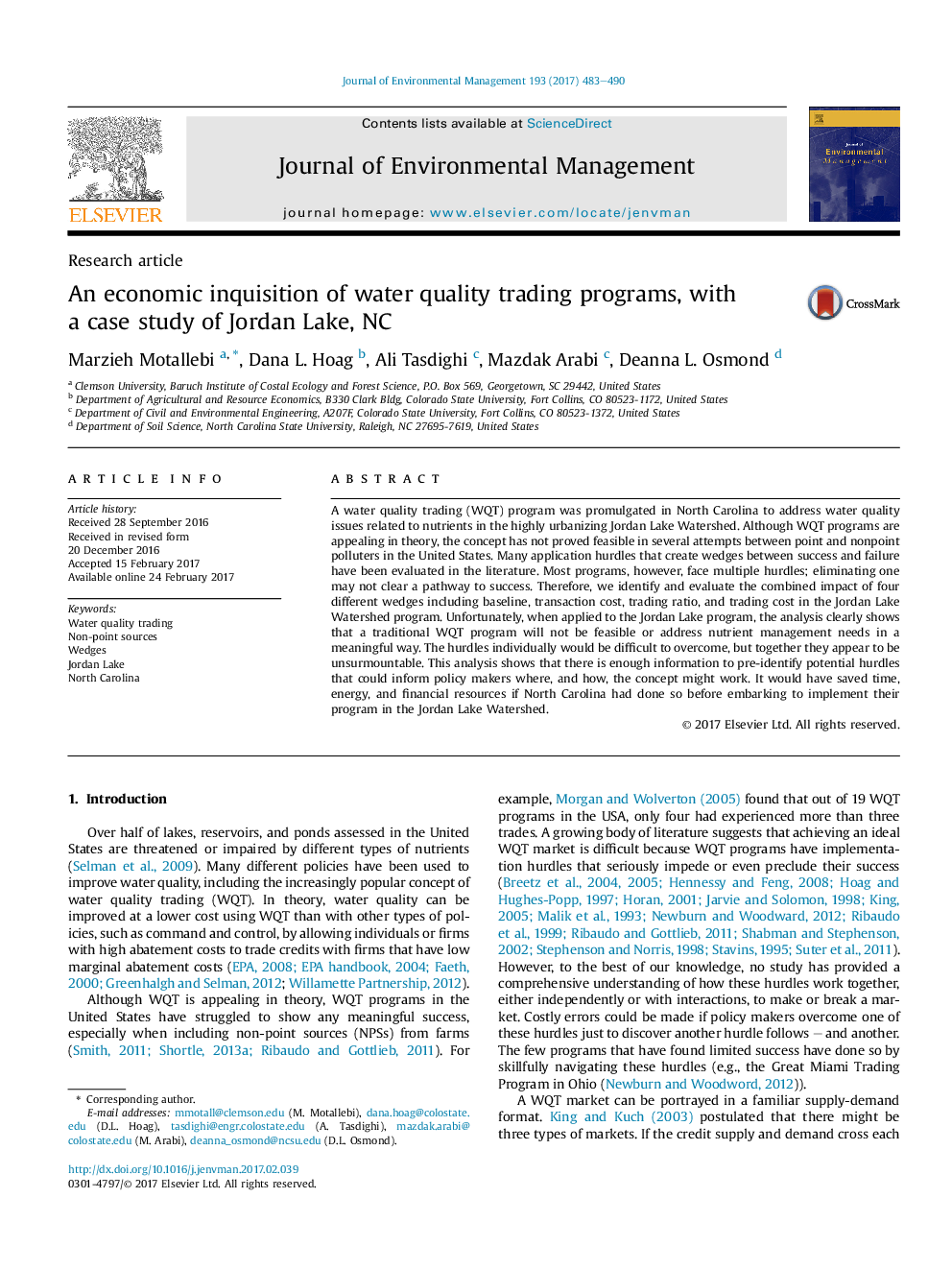| کد مقاله | کد نشریه | سال انتشار | مقاله انگلیسی | نسخه تمام متن |
|---|---|---|---|---|
| 5116851 | 1485222 | 2017 | 8 صفحه PDF | دانلود رایگان |

• In this paper, a WQT economic model was developed for Jordan Lake Watershed, NC.
• Four wedges, baseline, transaction cost, trading cost, and trading ratio, were added to the model simultaneously.
• The ideal Jordan Lake WQT market is weakened by mentioned four wedges.
• Had the analysis been done prior to implementation of this program, the North Carolina State may have saved time and financial resources.
• We offered a framework which is cost-effective and can be applied in most locations with current data and modeling tools.
A water quality trading (WQT) program was promulgated in North Carolina to address water quality issues related to nutrients in the highly urbanizing Jordan Lake Watershed. Although WQT programs are appealing in theory, the concept has not proved feasible in several attempts between point and nonpoint polluters in the United States. Many application hurdles that create wedges between success and failure have been evaluated in the literature. Most programs, however, face multiple hurdles; eliminating one may not clear a pathway to success. Therefore, we identify and evaluate the combined impact of four different wedges including baseline, transaction cost, trading ratio, and trading cost in the Jordan Lake Watershed program. Unfortunately, when applied to the Jordan Lake program, the analysis clearly shows that a traditional WQT program will not be feasible or address nutrient management needs in a meaningful way. The hurdles individually would be difficult to overcome, but together they appear to be unsurmountable. This analysis shows that there is enough information to pre-identify potential hurdles that could inform policy makers where, and how, the concept might work. It would have saved time, energy, and financial resources if North Carolina had done so before embarking to implement their program in the Jordan Lake Watershed.
Journal: Journal of Environmental Management - Volume 193, 15 May 2017, Pages 483–490